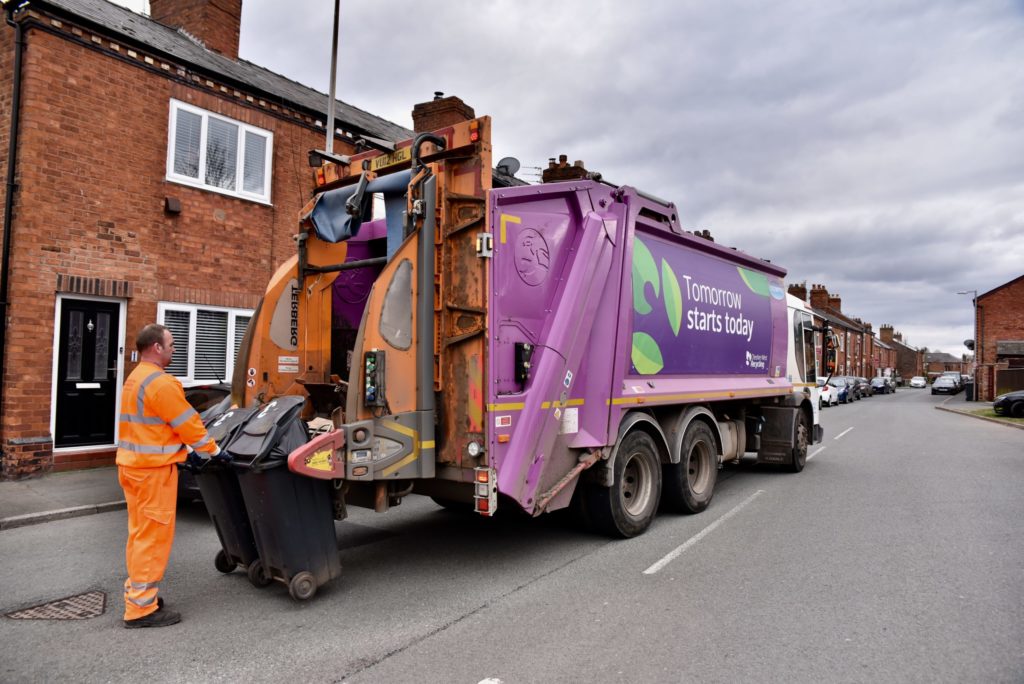It is well known that informal recycling for example when e-waste is burnt in an uncontrolled way to access precious metals spreads hazardous substances to humans and nature. But even conventional, formal recycling and reuse can increase the spread of hazardous substances. A recent research project increases the knowledge about how the problem can be understood, examines its causes and offers solutions.
The problem of hazardous substances in a circular economy typically arises in two ways. The ambition to retain materials as long as possible in the economy can also keep legacy substances in the loop that are to be phased out. For example, antique vases and mirrors may contain mercury, while plastics may contain Persistent Organic Pollutants such as PCBs. Many different types of substances are also mixed in the collection of waste. For example, in the separate collection of plastics, different polymers from different products and time-periods are mixed.
Modern recycling facilities can partially separate different polymers. But depending on the use of the plastics, different additives such as plasticisers or flame retardants have been added, which make even products made of the same polymers substantially different. In total, over 6,000 different chemicals can be found in plastics. What comes out of the recycling process, i.e. the secondary resources, are therefore typically more contaminated than the virgin resources, originating from bedrock.

Upstream
The most effective approach is to limit the introduction of hazardous substances upstream, in products. However, less than a small percent of all hazardous substances within the EU are regulated through bans, permits, threshold limits or information obligations. This is because many hazardous substances fulfil an important technical or economic function in products. The lack of regulation upstream brings the responsibility for tackling hazardous substances downstream, to the waste companies.
As products turn into waste, the producers’ information obligation, to provide information on hazardous substances downstream throughout the value chain, ceases.
These actors typically receive waste without detailed information about the nature of its hazardous substances. As products turn into waste, the producers’ information obligation, to provide information on hazardous substances downstream throughout the value chain, ceases. There are recent databases (such as SCIP or SDS-R) intended to make recyclers aware of hazardous substances, but these databases have proven time-consuming and difficult for recyclers to use in their automated operations. So with little information about the presence of hazardous substances, the waste companies proceed to decontaminate the waste.
At the same time, there is political pressure on these actors to increase circulation, which is a paradoxical responsibility that requires trade-offs and makes the idea of non-toxic material cycles hard to reach. Increased recycling may increase the spread of hazardous substances, while too strict requirements on hazardous substances may, on the other hand, reduce circulation.
Exemptions
There are several legal exemptions for recycling to address this problem. For example, according to REACH, the EU’s chemical legislation, recycled plastic may contain 10 times higher levels of cadmium than newly produced plastic. But by whom and how have the benefits of recycling been considered, so that the cadmium content in recycled plastic is allowed to be precisely 10 times higher than newly produced plastic?
Allowing 10 times higher levels of cadmium in recycled plastic than in new, virgin plastic may be correct, given the benefits of recycling, compared to production based on fossils. But to determine its correctness, the trade-offs must be made visible, communicated and discussed. As for now, the complex balancing between the positive and negative effects of a circular economy disappears behind the threshold limits.

A central problem with the thresholds limits in the use of waste is that the hazardous substances are regulated in relation to the mass of the material. For example, the threshold limit for cadmium in recycled plastic is according to REACH 0.1% by weight of the plastic material. Hence, only the pureness of the recycled material is considered, rather than any benefits brought by recycling. In order to also include the benefits of circulation, and thereby make trade-offs possible, hazardous substances should be regulated in relation to function, resource content, avoided primary production or carbon dioxides.
Expression of limits
In addition, the threshold limits for using waste can be expressed either in relation to the amount of hazardous substances that leach, and thus the risk of exposure, or the total occurrence, thus the hazardousness. In general, the chemical legislation such as REACH is usually based on a hazard perspective, while the waste legislation concerning the use of waste is primarily based on a risk perspective. As secondary materials often contain elevated levels of hazardous substances, the waste sector tends to advocate a risk approach and thus that the regulation should be adapted to a specific application and emphasise leachate concentrations.
However, designing the legislation based on specific applications reduces the possibilities of reusing the material in other areas. From a long-term perspective, a hazard perspective and thus regulation of total concentrations may therefore be preferable.
Threshold limits are commonly regarded as solid and safe, since they are produced through modelling. But modelling is based on uncertain assumptions. For example, to produce threshold limits of hazardous substances in the use of waste, Sweden used the protection of nature, species and ecological processes as a baseline in the modelling, while Denmark, just on the other side of the Oresund bridge, focused on protecting human health only.
Consequently, the specific threshold limits, for the same type of waste, differs significantly between these neighbouring countries.
Furthermore, threshold limits are typically defined only for a few hazardous substances. Monitoring a few substances in the form of indicators for contamination is an inexpensive and manageable approach for the responsible actors, which in the waste market would be the waste producer. But it provides limited information for the users about the pollution concerns since the waste in question may contain an unknown level of other hazardous substances than the regulated indicator substances.
Regulatory regime
Hence, the complexities of a circular economy need to be better integrated into the regulatory regime. First of all, risk assessments should consider that materials and hazardous substances in a circular economy will not necessarily fulfil one purpose, but may flow through different uses, sometimes unexpected, with varying exposures. In other words, for hazardous substances in products to be released on the market, safe circulation through multiple uses should be assured.
The complexities of a circular economy need to be better integrated into the regulatory regime
The starting point for handling hazardous substances in a circular economy needs to completely change. This should see producers sharing information on some substances through the value chain so that decontamination processes can be developed accordingly through to a situation where producers instead adapt product development, and the inclusion of substances, according to the circulation and decontamination processes that are practically available and economically viable downstream.
Such an approach may constrain product development, but would on the other hand encourage system innovation, rather than the conventional focus of innovation on isolated parts of the value chain.
In essence, to increase the institutional capacity to limit hazardous substances in a circular economy, the focus needs first and foremost to shift from the current win–win paradigm of the circular economy, in which the potential economic and environmental benefits are emphasised, to become more reflexive. A reflexive circular economy is open to self-criticism, and thus also considers side effects, problems, tensions, and losers that arise due to a circular economy.
Customers

Finally, one of the main challenges for a circular economy is the lack of interest from customers to shift to secondary materials and products from the conventional, stable, predictable materials from nature.
For this reason, customers, users, waste pickers and other actors who will have to bear the consequences of a circular economy need to be invited into political processes. Unlike those actors who create waste, users have an interest in the purity of the materials. By inviting this group of actors to the political process, the ambition of reducing the dispersion of hazardous substances can be represented in a circular economy.
Further Information
Read more in the project’s final report: The policy conflict between circularity and toxicity: Problems, perspectives and strategies, which can be downloaded from:
https://www.diva-portal.org/smash/record.jsf?pid=diva2%3A1706990&dswid=-1140
Author: Nils Johansson is a researcher at the KTH Royal Institute of Technology, Stockholm.
The project was financed by the Swedish Research Council for Sustainable Development, FORMAS.











Subscribe for free